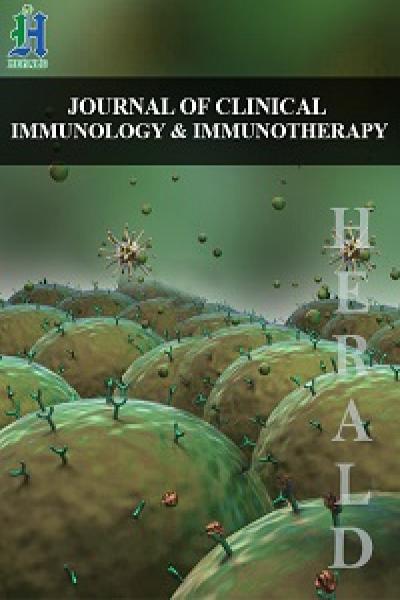
An Initially Painless Mass Indicative of Non-Atypical Lipomatous Tumor by MDM2 Amplification by Fish Found to be a Malignant Grade 3 Rhabdomyosarcoma
*Corresponding Author(s):
Sarabjot Singh MakkarLarkin Health System And Larkin University, 700 SW 62nd Avenue, South Miami, FL, 33143, United States
Email:sarabjot.makkar@case.edu
Introduction
A 71 year old male was seen for a mass at the lower lateral aspect of the right thigh. He reported having dull sensation without pain for less than one month. He was initially diagnosed with lipoma as per clinical signs, intraoperative findings and the results of MDM2 amplification by FISH. However, he had recurrent masses at the surgical site and his final diagnosis was grade 3 Rhabdomyosarcoma.
History
His medical history was notable for GERD, hypertension and anxiety. No allergies were noted. His past surgical history included a cholecystectomy, an upper endoscopy, a colonoscopy and repair of a left inguinal hernia with mesh.
Physical Examination
At presentation the patient appeared well-nourished, well-developed and in no acute distress. Blood pressure was 157/84, pulse was 57, temperature was 97.6°F, and respiratory rate was 18 breaths/min. Physical examination revealed an area of swelling along the lateral aspect of his right distal thigh. His swelling was notably non-tender and non-draining without erythema. He had no pedal Edema, no cyanosis or clubbing. No Petechiae were noted. There was no lymphadenopathy.
Course of Patient Care
The patient was initially seen for a possible sebaceous cyst of the right thigh.
Ultrasound revealed an ovoid Hypoechoic lesion corresponding to a palpable mass above his right knee. His mass measured 4.4x1.4x3.1 cm and had vascularity. He underwent an excision of the right lower extremity mass a week following his initial visit. Intraoperative findings showed a cystic-appearing mass in the subcutaneous tissue above the muscular fascia. Gross pathology revealed a tan-yellow-pink gelatinous-looking mass of 2.5x2.7x0.9 cm with intermingled adipose tissue. MDM2 amplification by Fluorescent in situ hybridization was performed by Mayo clinic laboratories and showed evidence of lipoma rather than atypical lipomatous tumor. Histologically, the adipose tissue was mature and consistent with lipoma.
Approximately two months after his initial presentation, the patient had an episode of recurrence of his right lower extremity mass. His wound was 8.5x2 cm at the time. It was decided to perform drainage of the recurrent mass, along with placement of a wound vac in the wound bed.
A wound excision was performed as well, which showed clear and non-purulent serous fluid. A capsule was found overlying the muscle. This capsule was excised and the muscle was incised. There was no evidence of any underlying abnormality in the muscle at this point in time. One week after his procedure at his follow-up appointment, there was fluid at the surgical site and the seroma was opened.
After six months elapsed, the patient presented with distal right thigh swelling despite fluid aspirations. His swelling was resistant to compression therapy. Ultrasound was performed to determine if the swelling was secondary to seroma/hematoma or due to a recurrence of what had been determined to be a lipoma earlier.
Imaging was performed and showed evidence of a mass suspicious for sarcoma. He underwent an incisional biopsy, as indicated for the persistent swelling, with operative findings showing gelatinous mass with solid components.
The mass was seen to extend both within and underneath the muscle layer, showing significant progression compared to his prior wound excisions.
The mass, including material with mucinous characteristics, was sent to pathology.
The solid components of the mass were identified as malignant per pathology on the frozen section. Intraoperative consultation to pathology revealed a Sarcomatous tumor with mucoid/myxoid background. Immuno-histo-chemical stains were performed by Mayo clinic laboratories. Cytogenetics and molecular pathology were not performed on the soft tissue biopsy. The immuno-histo-chemical stains revealed that the sarcoma stained positively for desmin, myoD1 and myogenin. These three were positive on repeat stains as well. The sarcoma was negative for AE1, AE3, S-100, SOX10, SMA and CD31. The histological grade of the sarcoma by FNCLCC was grade 3. Abundant Eosinophilic cytoplasm gave the patient's tumor cells a Rhabdoid appearance. The mitotic rate of the sarcoma was 11/10 high powered fields. His final pathological diagnosis was pleomorphic high grade Rhabdomyosarcoma. Residual tissue was not removed during the incisional biopsy and the patient was referred to oncology.
Discussion
The mature adipose tissue seen on the first biopsy prior to recurrence may have been another lipoma or it may have been due to sampling error. The MDM2 12q15 Amp test was ordered to check for MDM2 gene amplification. Absence of the MDM2 constituted evidence against a diagnosis of atypical lipomatous tumor. However, there is a disclaimer to note about the analyte Specific Reagent (ASR) used to develop the MDM2 test. The disclaimer is that since only a portion of the tumor was tested by the ASR, inadequate sampling is possible. Therefore, it is possible that the result of the MDM2 test is non-representative of the entire tumor cell population.
It is necessary to consider the possibility of incomplete excision, leaving residual tissue that grew and led to recurrence, further mitotic activity and Rhabdomyosarcomatous differentiation. Thus, the cells which led to pleomorphic high grade Rhabdomyosarcoma may have been in another part of the tumor at the time the MDM2 test was performed, evading detection until growing to cause recurrent swellings of his right lower extremity.
Conflicts of Interest
No potential conflict of interest relevant to this article was reported.
Informed Consent
Informed consent was obtained from the patient for research publication.
Citation: Makkar SS, Stuart D (2021) An Initially Painless Mass Indicative of Non-Atypical Lipomatous Tumor by MDM2 Amplification by Fish Found to be a Malignant Grade 3 Rhabdomyosarcoma. J Clin Immunol Immunother 7: 057.
Copyright: © 2021 Sarabjot Singh Makkar, et al. This is an open-access article distributed under the terms of the Creative Commons Attribution License, which permits unrestricted use, distribution, and reproduction in any medium, provided the original author and source are credited.

